Estimated reading time: 13 minutes
There are articles all over the Internet about the new kitchen gadgets you “absolutely must-have in your kitchen”. Unfortunately, the vast majority of these gadgets are single-use appliances and are cheaply made.
If you’re serious about cooking delicious meals from scratch, you don’t need the latest plastic gizmo. You need a few quality kitchen basics. One of those basics should be a Dutch oven. There’s a reason Dutch ovens have been used for centuries throughout the world. They are kitchen workhorses.
Dutch ovens are thick-walled solid cast iron or enameled cast iron pots with thick sturdy lids. Traditionally they were used for hanging over an open fire or baking in the coals of an open fire. Today they’re most frequently used to cook on the stovetop, in the oven, or on a grill, but they’re still just as useful.
Want to save this post for later? Click Here to Pin It on Pinterest!
6 Advantages of a Dutch Oven
1. Many Dutch ovens can be used in a variety of ways.
Most Dutch ovens are safe to use on the stovetop, in the oven, and even in an open fire. For this reason, they’re perfect for everyday use as well as for camping, off-grid living, and survival scenarios.
2. Dutch ovens are super durable.
Unlike many modern kitchen tools, Dutch ovens are made to last. They’re one of the few pieces of kitchenware that will hold up so long they’ll probably be passed on to your grandchildren.
3. Dutch ovens are safe.
Unlike a lot of modern non-stick cookware, Dutch ovens aren’t coated in chemicals.
4. They’re incredibly versatile.
You can cook almost anything in a Dutch oven from roasts to french fries to bread. This is partially because they’re safe to use for so many cooking methods.
5. They can help you save energy.
Dutch ovens retain their heat for a long time, so they can be used to continue cooking food after you’ve turned your burner or oven off. They were often used in combination with a “haybox” to keep them insulated and cook a meal slowly with little energy. (Here is some information on haybox cooking.)
6. They heat evenly and hold in moisture and flavor.
These characteristics often make for extra delicious baked goods, casseroles, and stews.
4 Types of Dutch Ovens
The first thing to consider when purchasing a Dutch oven is whether you’d like a solid cast iron Dutch oven or one that has been enameled. Both come with their own distinct advantages and disadvantages.
1. Enamel Dutch Ovens
While enamel Dutch ovens cannot be used in campfires for those sticking with just home cooking, they can still be an excellent choice. You’ll never need to season them, they’re still very durable, and they heat even more evenly than a traditional solid cast iron Dutch oven. They also come in a variety of colors.
When purchasing an enamel Dutch oven, be sure to opt for a quality piece that is rated for a high temperature.
2. Solid Cast Iron Dutch Ovens
These Dutch ovens are probably the more versatile of the two. They can handle camping trips and being set right in the fire and can be used in your home oven at extremely high temperatures.
They also add a little bit of iron to your food each time you cook in them, helping you make sure you're getting your daily recommended value.
Unlike enamel Dutch ovens, however, these Dutch ovens will need to be seasoned. This is a simple process but does add a bit of extra maintenance. It will be discussed further below.
Cast iron Dutch ovens also come in three basic styles giving them added versatility for your personal cooking style. Most just have a plain pot and lid, but there are camp ovens and double Dutch ovens available as well.
3. Camp Dutch Oven
Consider how much outdoor cooking you want to do. Some Dutch ovens offer the benefits of small legs and a flat, lipped lid that coals can be scooped into. These features allow you to evenly bake food in an open fire. They also generally have a sturdy handle for easy retrieval or for hanging them over the flames.
4. Double Dutch Ovens
These Dutch ovens add yet another aspect of versatility because their lid doubles as a skillet.
No matter what type of dutch oven you choose it’s important to look for quality. If you opt for a quality one, it will never need to be replaced. Quality Dutch ovens have a few important features.
- They’re rated to withstand high temperatures including any handles.
- They have an even thickness throughout.
- They’re made of cast iron (cast iron covered with enamel counts).
- There are no chips, dents, or odd shaping of their iron or enamel.
How to Season Your Dutch Oven
If you opt for a solid cast iron Dutch oven, you’ll need to know how to season it. Don’t worry, it’s actually an easy and quick process.
The first step is to clean your Dutch oven. If it’s new, you’ll want to thoroughly wash it with soap and water. Then dry as much moisture as possible off with a clean towel.
Next, you’ll want to grease it. Opt for a vegetable oil or lard, not butter. Butter will burn during the seasoning process. You should use a paper towel or clean cloth to rub the oil into the Dutch oven’s surface. Make sure you coat the entire Dutch oven, including the outside and lid.
Now place your Dutch oven and lid next to each other in the oven at 350°F. You should set the Dutch oven upside down so any excess oil can drip out. If you’re worried about the oil drippings, you can place them on a cookie sheet. Bake for 40 minutes and repeat this process until they’re dark colored and shiny. This coating you build up helps them to naturally be non-stick.
How to Clean Your Cast Iron Dutch Oven
It sounds weird, but unless you choose an enamel oven, you should avoid using soap on it as much as possible. Simply add a bit of hot water and scrub/scrape off any food.
Using soap or washing it will remove the protective coating you built up by seasoning it, so if you wash it, you’ll need to repeat the seasoning process more often.
After cleaning your Dutch oven, you should first dry it with a towel and then use heat, whether it’s over the campfire or in the oven, to ensure it doesn’t rust.
Even if you clean it properly, your Dutch oven may still occasionally need to be re-seasoned. Acidic foods, in particular, can remove some of its coating. However, cooking fatty foods or frying in your Dutch oven will help build up its coating. The better the coating, the more non-stick it will be so it will be easier to clean.
4 Dutch Oven Accessories
Though not required, there are a few accessories you can get that will make using your Dutch oven a little easier.
1. Trivet
A cast iron trivet can be placed in your dutch oven to raise meats and other foods off the bottom and prevent scorching.
2. Lid Lifter
Cooking in an open fire is tough. There’s no setting the temperature, so the only real way to tell how your meal is doing is to check. Using a lid lifter keeps your face and hands away from the intense heat each time you check on your food. Lodge offers a durable, affordable option.
3. Tripod
While not strictly necessary, a tripod from which to hang your Dutch oven can make cooking foods that you don’t want directly in the fire’s heat a bit easier and definitely adds a more traditional, rustic feel to your camping trip.
4. Cooking Thermometer
If you don’t already have one, cooking thermometers are extremely useful when making from-scratch recipes.
Cooking Over An Open Fire
While it may seem self-explanatory, there are a few tips and tricks that can make your campfire experience much easier.
First, you’ll want to have a good fire. Ideally, this will include dry, hardwood logs as they burn longer and produce more heat. You shouldn’t immediately begin cooking on your fire. Instead,, wait until it burns down a bit and there’s a nice bed of coals, no matter what you’re cooking.
Depending on how long you’re cooking or baking, you may need to feed the fire as it bakes. Small pieces of hardwood can be slowly added but be very careful about adding a lot at once and burning your food.
Baking
To bake something in your Dutch oven, you want to set it on a bed of coals. You may need to use a garden rake, shovel, or even a stick to smooth out a space. It’s best if you have a camp Dutch oven with legs because the coals will still get some air and stay going.
If you have a regular Dutch oven, you can just set it directly on the coals or a few small rocks. Then you want to place some coals on top of it so the top cooks as well. Obviously, a shovel is handy for this. A camp Dutch oven will again be better suited to holding the coals, though you may be able to balance some on a regular oven.
Your recipe should give you more cooking tips about the length of time you’ll need to bake your food. Due to the hot coals, a lid lifter like the one above is especially handy if you need to check your food often.
Cooking
If you just want something to simmer like a soup or stew, you’ll want a way to keep your Dutch oven farther from the heat of the fire. Setting up a tripod like the one listed above is one of the easiest ways to accomplish this.
These pre-made tripods make it super easy to adjust how high your Dutch oven is hanging, which is the only way to quickly change the how much heat it’s getting. You could also make your own tripod, but if you’re using wood, be sure your fire is small enough and your tripod is large enough that the legs don’t catch.
Alternatively, you could set up a grate over your fire or use rocks or bricks to set your oven up on.
Safety Tips
- Dutch ovens are very heavy. Make sure that whatever is supporting your Dutch oven–whether it's a grate, a tripod, or stacked bricks–is sturdy and secure so the oven doesn’t fall and crack or splash hot food onto you.
- Remember that when you remove the lid, steam and hot air will come out just like a normal oven.
- Always monitor your fire and rake any dry material away from your site.
- Never place a hot Dutch oven into cold water as this can damage it.
- People, especially children, may be curious about Dutch oven cooking. But even though it’s fun, you should always make sure everyone is being safe around your fire and oven.
What to Cook in Your Dutch Oven
Breads & Cakes
If you love those round loaves of artisan bread with that lovely crunchy golden crust and soft, chewy inside, you’ll love Dutch oven bread. Dutch ovens slowly heat up, cook evenly, and hold in moisture making it super easy to get delicious bread, even if you’re not an expert baker. Many dutch oven bread recipes also have the advantage of being no-knead.
Check out this recipe and guide from King Arthur Flour.
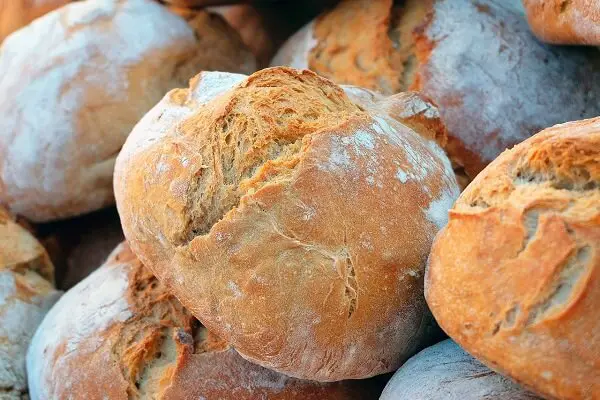
Roasts
Dutch ovens might be the best way to make a roast. Their ability to conduct heat well and to hold in steam, makes for a flavorful, moist roast.
This pot roast recipe is a great way to get started with Dutch oven cooking.
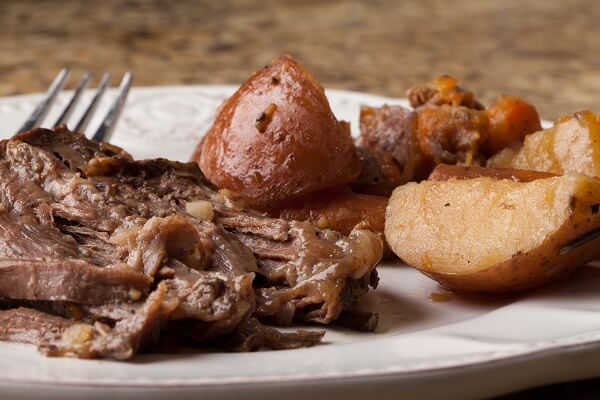
Beans
Buying dried beans in bulk can be a great way to save money and eat healthy. They’re super easy to cook up ahead of time in your Dutch oven, and can be left plain and then added to a variety of meals.
Or you can use a recipe like this to make literally the best baked beans you’ve ever had. The canned stuff just doesn’t stand up.
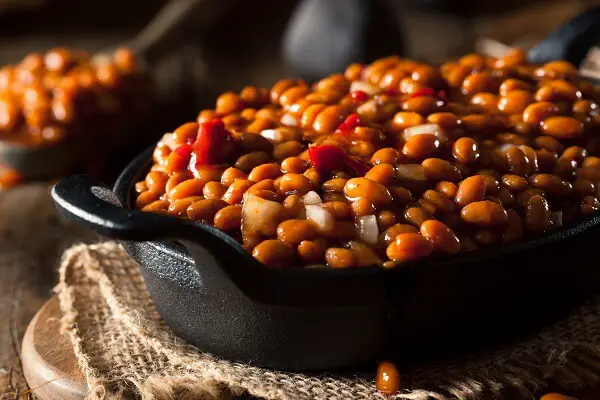
Fried Foods
It’s not what you normally think of when you think Dutch ovens, but they’re actually great for frying food. Dutch ovens heat evenly and withstand high temperatures, which is excellent for any deep frying you may be doing. Plus, you can even wow your friends by making delicious French fries on the campfire.
Try these easy, Dutch oven french fries.
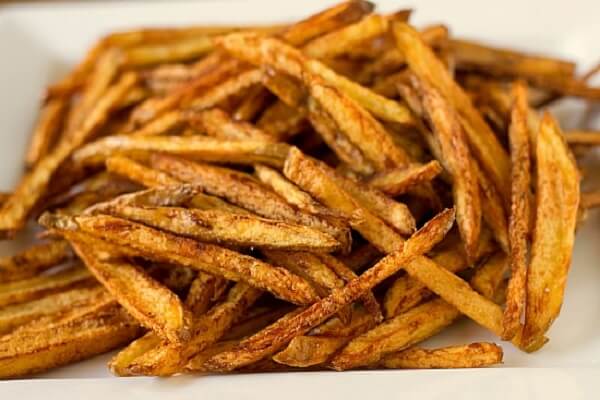
Casseroles
Casseroles cook just as well, if not better in a Dutch oven, so there’s no reason to waste space and money on a separate casserole dish. Let your Dutch oven do double duty instead.
Check out this recipe for the Ultimate Dutch Oven Mac and Cheese.
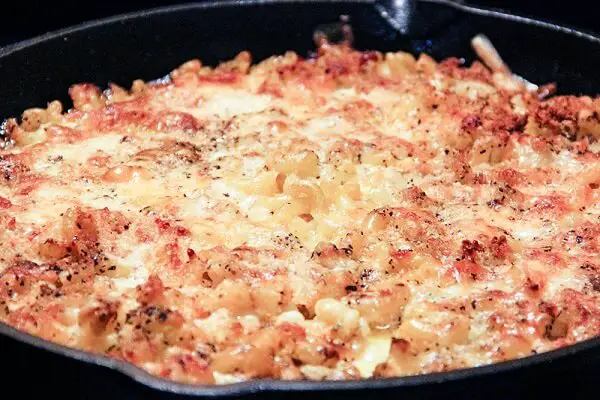
Soups & Stews
Long-simmering soups are wonderful ways to make use of your Dutch oven. Its thick lid and sides will help hold in all the flavor.
Try this fresh corn zucchini chowder recipe.
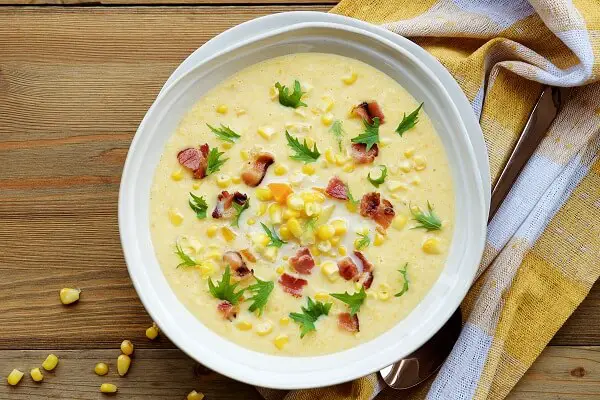
Pies & Cobblers
Whether it’s classic apple pie, chicken pot pie, or peach cobbler, Dutch ovens will make it tastier than a regular pie pan.
Check out this awesome Texas peach cobbler recipe.
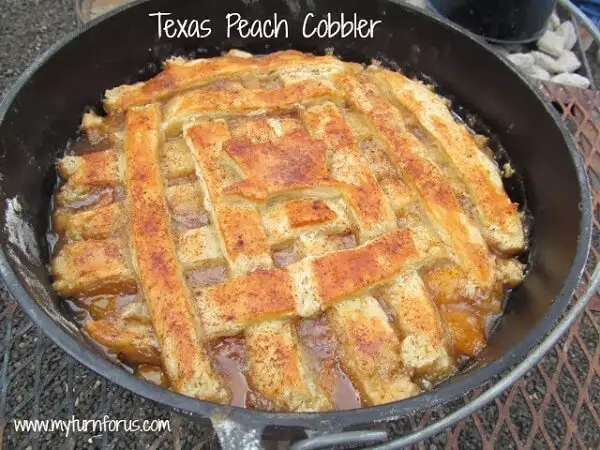
From lasagna to pizza to a whole chicken, there are so many things you can cook in a Dutch oven that will come out wonderfully. Don’t be afraid to try new recipes and experiment!
No matter your taste or cooking style, Dutch ovens really are a worthy investment. Their incredible versatility and durability make them a practical choice for anyone who wants to make easy, from-scratch meals. Whether you’re a homesteader, prepper, foodie, or a camping enthusiast, Dutch ovens are an affordable way to improve your cooking.
Like this post? Don't forget to Pin It on Pinterest!
You May Also Like:




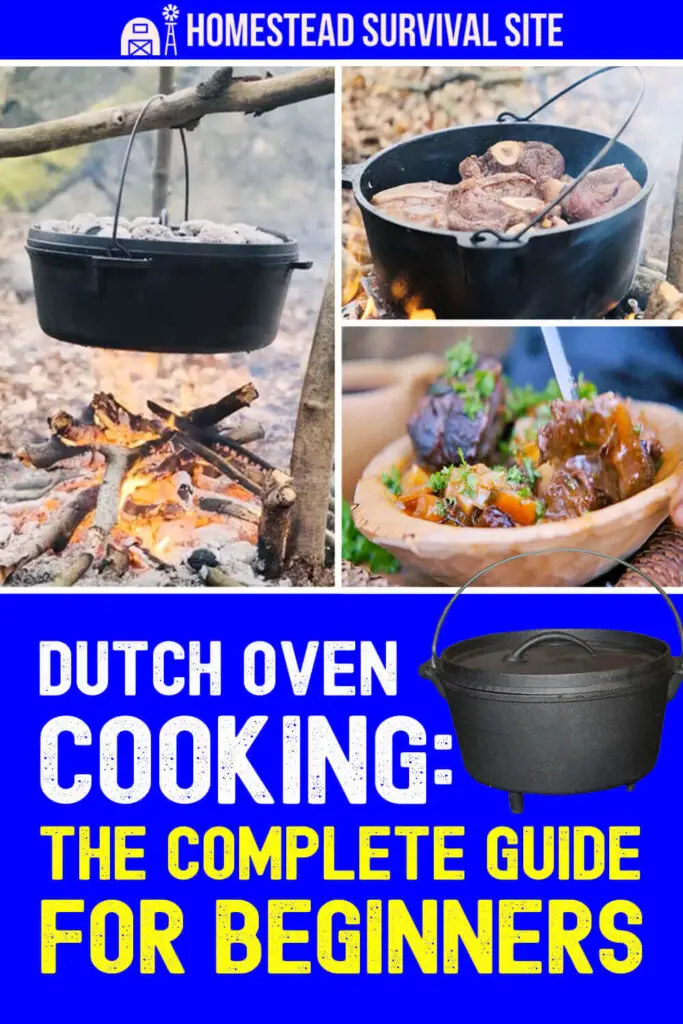

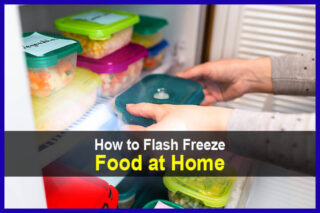
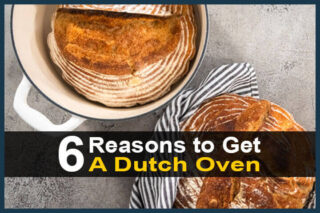
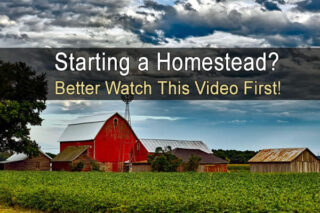

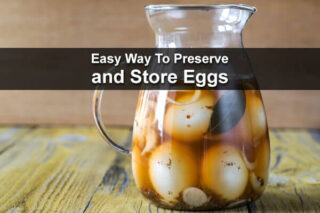
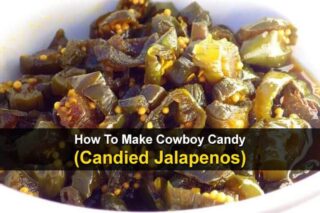


Bear in mind that excess iron in your body is stored in your heart. I would not think this would be good for people with heart conditions. Also, if you have really high iron levels (I do), then you would not want to use cast iron.
Can enamel dutch ovens go in the oven? The article above seems to be talking about outside cooking only.
yes, but check with the manufacturer for max temp. some enameled dutch ovens are only good up to 400* and others are good up to 500*. this is particularly important when it comes to baking breads.